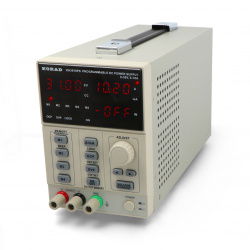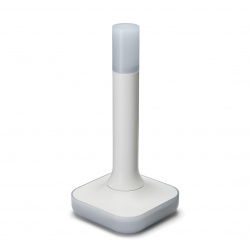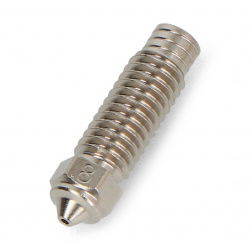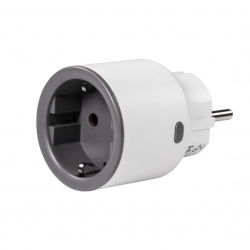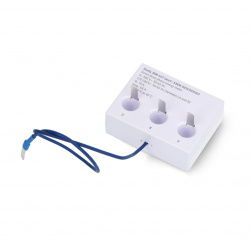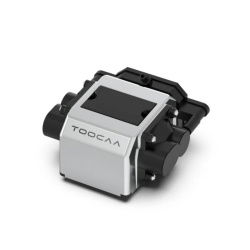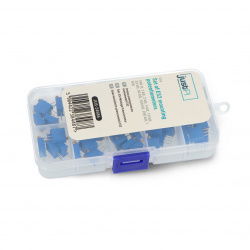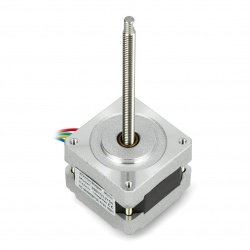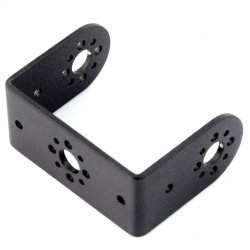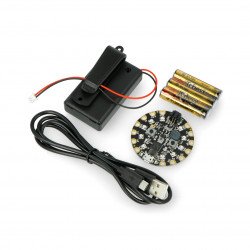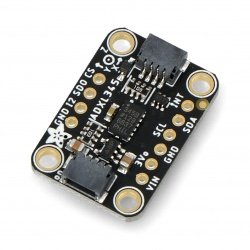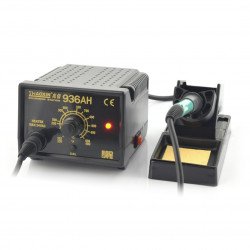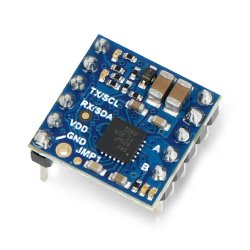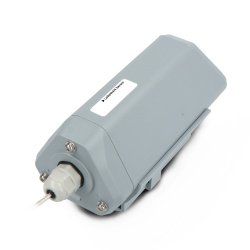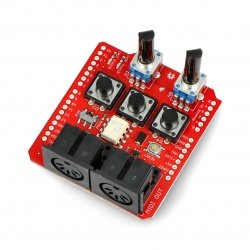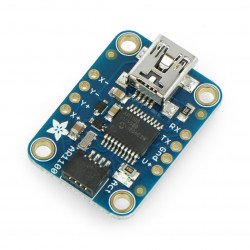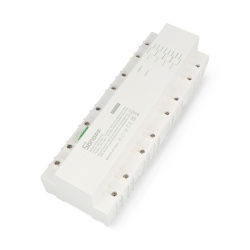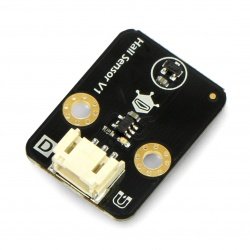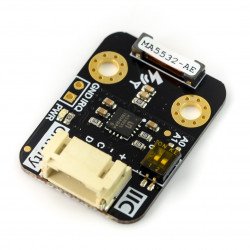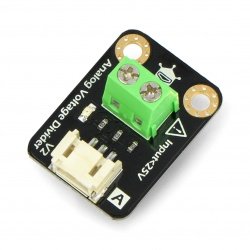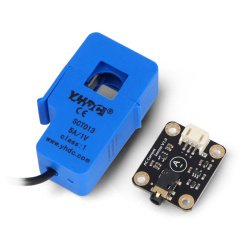Gravity - current sensors
DFRobot Gravity: Analog AC Current Sensor SCT 013-020 - to 20A
The sensor measures the intensity of the current flowing in a pipeline without its opening. Measurement occurs through the insulation on a single wire, and the output is the...DFRobot Gravity v2.1.0 - I2C Digital Wattmeter
A module that allows you to measure electric energy consumption of up to 26 V / 8 A. The maximum measurement error is approx. 0,2%. It communicates through an I2C interface. It...DFRobot Gravity - Hall magnetic field sensor
The magnetic field sensor with digital output OH9249. It is supplied with the voltage of from 3.3 V to 5 V, it works with Arduino modules.DFRobot Gravity – Lightning Sensor
The module is equipped with the AMS AS3935 Franklin system and a special antenna Coilcraft MA5532-AE for determining the distance from atmospheric discharges, intensity and...DFRobot Gravity - voltage divider 1/5
A voltage divider is used, when the measured voltage has a larger value than the range of A/D converter. The device works in the range from 0,0245 V to 25 V. The output...Gravity - analog AC current sensor - up to 10A - DFRobot SEN0288
An analog sensor from DFRobot that measures the AC current flowing in a wire without cutting it. The measurement range is up to 10 A , and the measurement itself is done...Gravity - analog AC current sensor - up to 5A - DFRobot SEN0287
Analog AC current sensor from DFRobot with a 1 m long probe . It allows you to measure the current flowing in the wire without having to cut it - the measurement is made...DFRobot Gravity: Analog 20A Current Sensor
Current sensor operating in the range up to 20 A and up to 311 Volts on the basis of the Hall effect. The output is an analog voltage. The supply voltage is 5 V.DFRobot Gravity - Linear/Analog Hall Effect Sensor with Magnetic Field Range - DFR1132
DFRobot Gravity module with Hall sensor designed to measure and monitor the intensity of the magnetic field . It is equipped with 3 analog pins and an LED indicator that...See also
- Gravity - starter kits
- Gravity - base hats
- Gravity - accelerometers and gyroscopes
- Gravity - actuators
- Gravity - gas & dust sensors
- Gravity - medical sensors
- Gravity - distance sensors
- Gravity - temperature sensors
- Gravity - force sensors and limit switches
- Gravity - light and colour sensors
- Gravity - LED
- Gravity - encoders and potentiometers
- Gravity - converters
- Gravity - communication modules
- Gravity - sound modules
- Gravity - relays
- Gravity - buttons, keys and joysticks
- Gravity - cables
- Gravity - displays
Current transformers
Electronic engineers today have many methods for measuring current values - both direct current (DC) and alternating current (AC). While some methods can be applied to both types of current, some techniques are suitable only for one of them. The classic and oldest group of methods for determining the value of alternating currents are techniques based on the phenomenon of electromagnetic induction. Popular current transformers, which are a kind of simple transformers, operate on this principle. Current transformers are used to measure currents of particularly high currents (of the order of tens of amperes and more), although there are also versions available for precise measurements of small currents (below 10 A). For example, the AC current sensor SCT 013-020 allows for measurement of currents up to 20 A, and the construction of the transformer allows for its installation on a wire without cutting the circuit - the measuring probe has the form of a convenient clip in a solid plastic insulation.
Hall effect sensors
Another group of sensors, often used in various industries, is based on the Hall effect. The flow of current in the measured circuit generates a magnetic field whose intensity (and thus also induction) changes proportionally to the instantaneous value of the current. Thanks to this, Hall effect sensors can be used to measure both alternating and direct currents - it is worth remembering that the latter cannot be measured using the previously described transformers. Although the design of Hall effect current sensors is quite demanding in terms of technology, fortunately, the modern electronics engineer does not have to go through the trouble of building such a measuring unit from scratch - there are a number of high quality integrated sensors on the market, ready to be used in any electronic circuit. These sensors offer outputs in analog (voltage) or digital form, which significantly facilitates implementation in the target device. An example of this type of sensor is the module with catalog number DFR-08367, powered by 5 V (on the analog interface) and capable of measuring DC and AC currents up to 20 A.
Other interesting measurement modules from the Gravity series
DFRobot also offers other modules, perfect for use in various devices and installations for teaching and scientific purposes. An example of such a solution is the integrated module for the measurement of energy consumption in systems supplied with constant voltage (DC) in the range up to 26 V and with current consumption not exceeding 8 A. The small board with index DFR-13753 is equipped with a 4-pin Gravity connector and communicates with an external microcontroller via an I2C serial interface. It can measure energy with an accuracy of 0.2% and is compatible with Arduino and Raspberry Pi, among others. In many practical applications, the 3.7V Li Battery Fuel Gauge V1.0 module can also be used, providing the function of measuring the charge level of a 1-cell lithium-polymer battery. The chip has reverse polarity protection and also offers an alarm output in the form of two goldpin solder pads.






























































































































































































































































































































